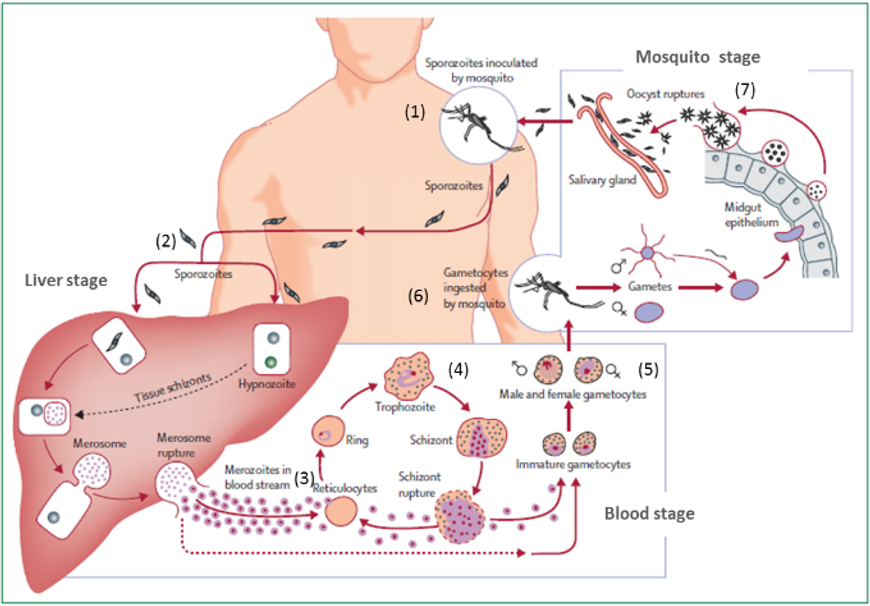Life cycle of the parasite
In the figure below the life cycle of the malaria parasite is presented. It consists of the following steps:
(1) The female anopheles mosquitoes inoculate infective sporozoites (2) into the skin, and reach the bloodstream and enter hepatocytes initiating the exoerythrocytic stage. (3) Within the liver, the parasite can either differentiate into tissue schizonts, which after thousands of mitotic replications in individual hepatocytes release merozoites into the bloodstream, or differentiate into a dormant stage called a hypnozoite that, upon activation after months or years, causes clinical relapse. (4) During the erythrocytic stages, the parasite merozoites predominantly, if not exclusively, invade reticulocytes. This cyclical developmental process takes about 48 h. (5) in additions, some parasites can differentiate into mature gametocytes before a clinical infection and illness develops, thus having the advantage of continued transmission to the insect vector before the appearance of clinical symptoms and subsequent treatment. (6) Circulating gametocytes are a rounded shape and on uptake in the blood meal of anopheles mosquitoes begin the sexual cycle, which includes release of the male and female gametes, fertilisation, and formation of a motile ookinete that crosses the midgut epithelium. (7) Differentiation into a new replicative form known as the oocyst, release of sporozoites, migration, and invasion of the salivary glands ends this complex life cycle in which the parasite undergoes more than ten stages of cellular differentiation and invades at least four types of cells within two different hosts (Mueller et al., 2009).

